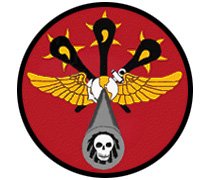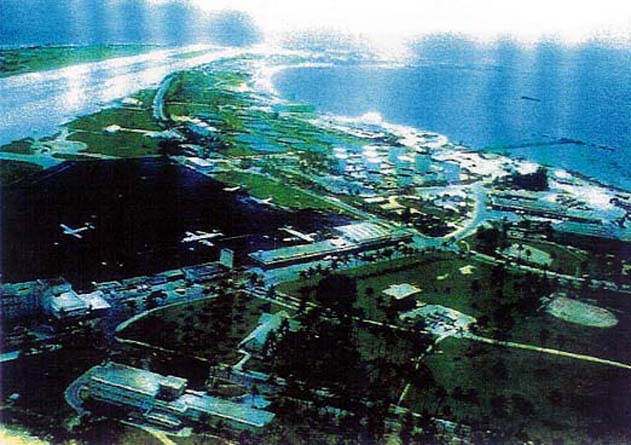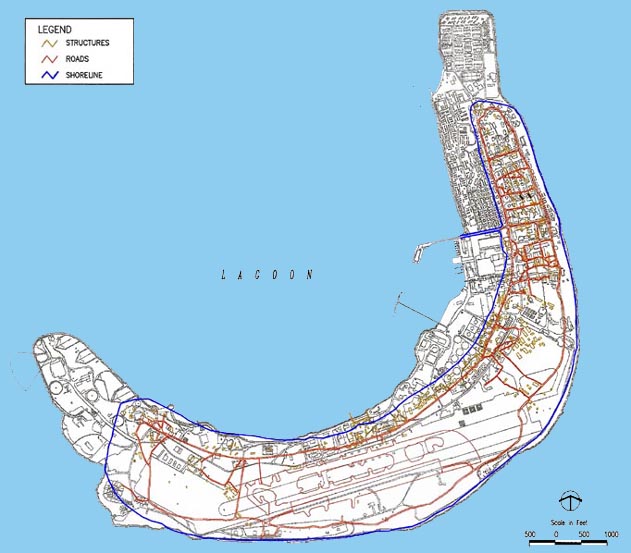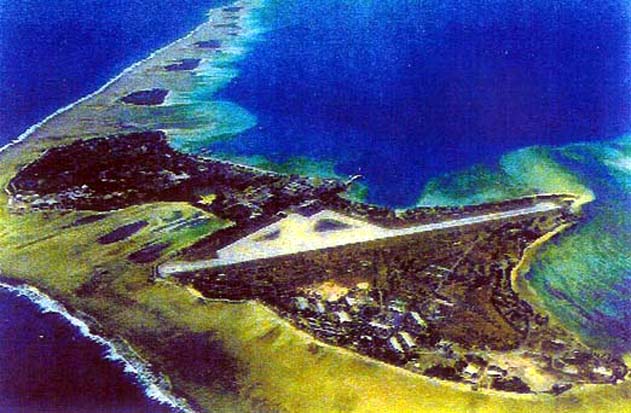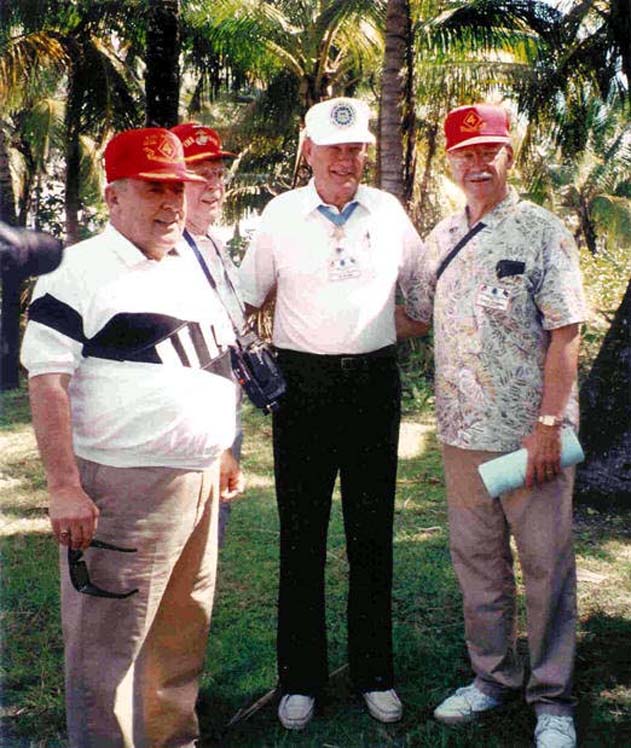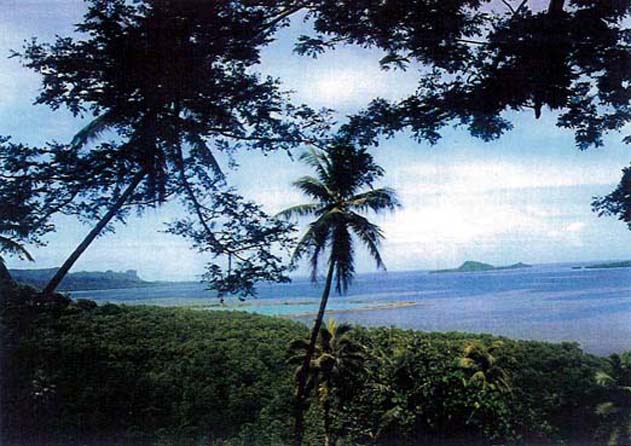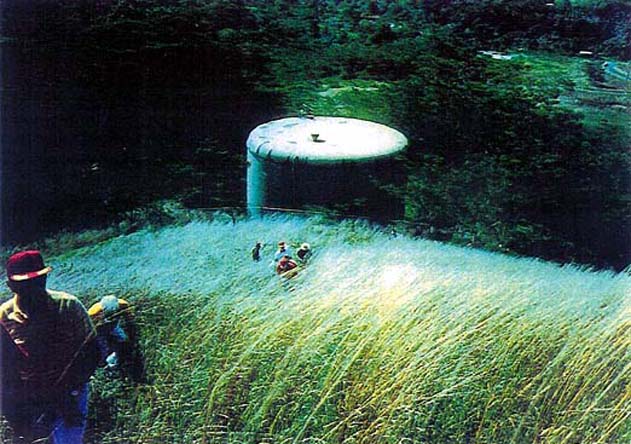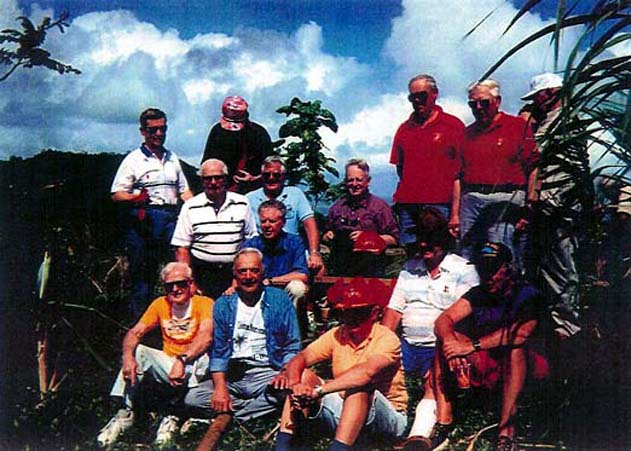|
|
||
|
|
||
|
|
1994 REUNION - CENTRAL PACIFIC During February of 1994, sixteen members of Marine Bombing Squadron Six-Thirteen returned to the Central Pacific in observance of the 50th Anniversary of the invasion and capture of Kwajalein Atoll. During their visit, the squadron members participated in ceremonies on both Kwajalein and Roi-Namur islands. Following these events, the group flew to Ponape in the Eastern Caroline islands to visit the crash site of their aircraft that was lost during a strike in February of 1945. On Ponape, the group arrived at the crash site, then climbed a very steep and overgrown hill to the location of the Japanese anti-aircraft gun that shot down their squadron's aircraft. There, 49 years to the day, they laid a wreath in memory of their seven comrades that were killed. Following their visit to Ponape, the members returned to the continental United States via Guam and Oahu.
Kwajalein today is now used by the United States as a tracking station for satellites and missile testing. Access to the island is strictly limited due to the secret nature of the work being conducted there. About 2,800 of the inhabitants are defense contractors and the remaining 200 are U.S. Army personnel. During their visit to Kwajalein in 1994, VMB-613 members and their wives stayed in trailers across the street from the maintenance building, seen in the center of the photograph. Photograph: Courtesy of Bill Kehr
Since 1945, Kwajalein has increased in size by roughly thirty-percent. Fill areas have been added to both ends of the island as well as on the lagoon side. The outline of Kwajalein in 1945 is denoted in the blue outline, superimposed over a map of the island today. Map: Courtesy of Harold L. Parker
The airstrip on Roi can be clearly seen from this photograph taken in 1994. Although the causeway to Namur has been enlarged by land fill since 1945, the pier in the lagoon is the same one used by the Japanese during their occupation of the island. Photograph: Courtesy of Bill Kehr
While visiting Roi-Namur, squadron members had the opportunity to meet a number of 4th Marine Division veterans who had assaulted and seized the the island from the Japanese in February of 1944. One of these men was Richard K. Sorenson (center) who, while serving as a Private with "M" Company, 3rd Battalion, 24th Marines, was awarded the Medal of Honor for his actions on Namur during the battle. Along with Mr. Sorenson are (L-R) are Frank L. Pokrop (G-2/24), James D. Garls (VMB-613), and Chester Dunham (Hq-2/23). Photograph: Courtesy of Charles F. Knapp
Taken from the lodge where the VMB-613 members and their wives stayed during the 1994 trip to the Central Pacific, Ponape is now a very peaceful place. Seen in the distance on the left is Sokehs Rock that marks the entrance to the harbor town of Kolonia. In 1945 Sokehs Rock had been a position for many Japanese anti-aircraft guns. The remains of many of these guns are still there today. Photograph: Courtesy of Bill Kehr
In February 1994, Marine Bombing Squadron Six-Thirteen members and their wives returned to Ponape to visit the crash site of the squadron's aircraft that was shot down during the raid on February 6, 1945. The aircraft crashed toward the bottom of the hill a short distance from the water tower. Squadron members are seen here climbing a very steep hill to reach the position of a the Japanese anti-aircraft gun that shot their aircraft down. Photograph: Courtesy of Bill Kehr
Veterans of Marine Bombing Squadron Six-Thirteen pose for a group photograph at the location of the Japanese anti-aircraft gun emplacement atop the hill in the preceding photograph. There, they laid a wreath in memory of their seven comrades who were killed during the February 6, 1945 raid. Photograph: Courtesy of Bill Kehr |
|
|
Copyright © 2008 Marine Bombing Squadron Six-Thirteen Association. All Rights Reserved. This website is in no way affiliated with or approved by the United States Marine Corps, the Navy Department or any agency of the government of the United States of America. |
||
